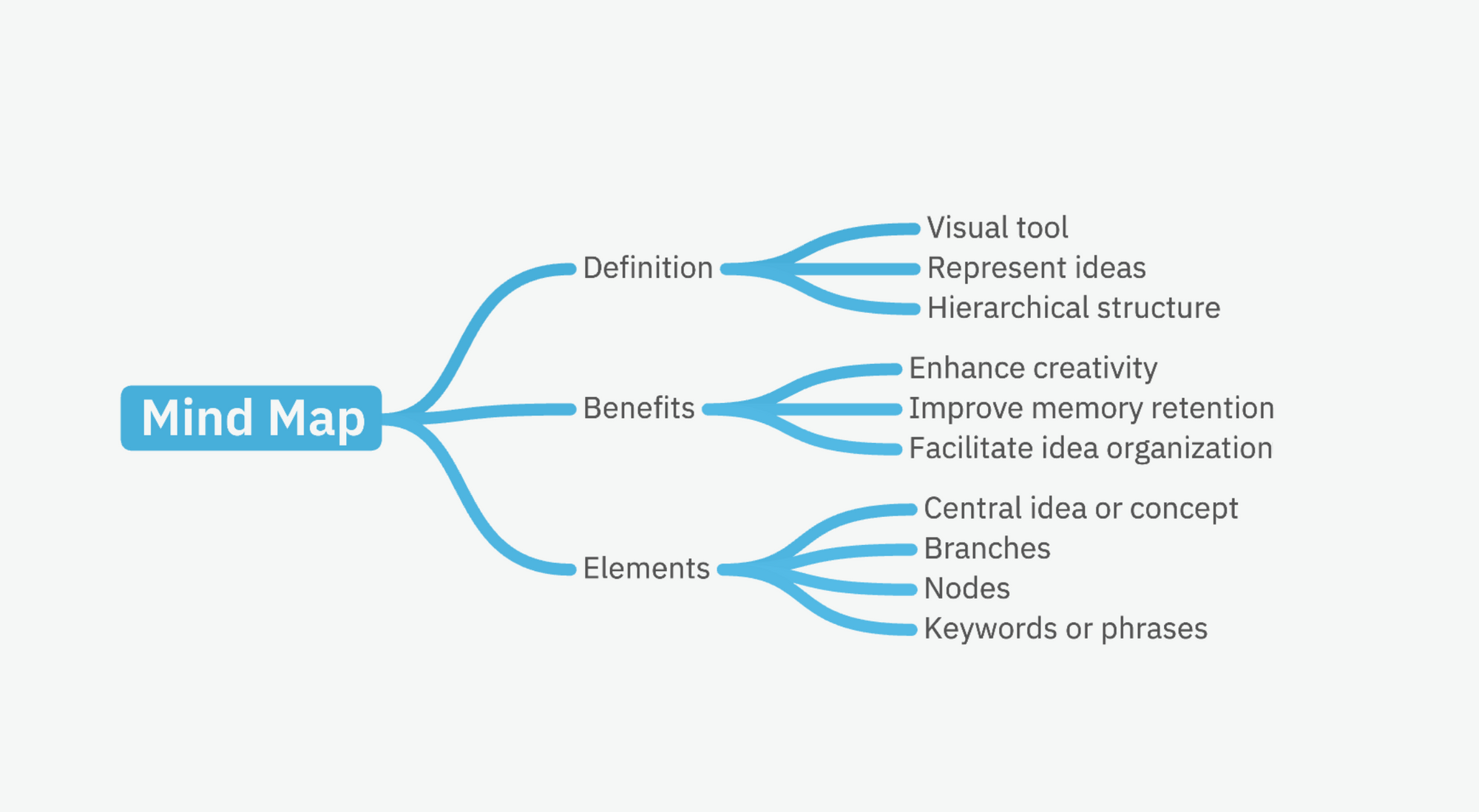Mind mapping for life: how to map out your goals and achieve them
Unlock your potential and achieve your dreams with the help of mind mapping

Does setting and achieving your goals sometimes feel overwhelming? It's no secret that setting, tracking, and accomplishing goals is an important ingredient to success. But how can we make goal-setting more manageable and effective?
Enter the world of mind mapping: a straightforward, visually appealing technique that helps you map out your objectives and break them down into achievable tasks. In this blog post, I'll introduce you to mind mapping, explain why it's beneficial for setting life goals, and guide you through the process of creating your very own mind map for triumph.
What is mind mapping?
Mind mapping is a visual technique that involves organizing your thoughts, ideas, and goals in a hierarchical, interconnected structure. At its core, a mind map starts with a central idea or theme, usually represented by an image or keyword in the middle of the page. From this central concept, branches extend outwards, each representing a related thought, idea, or sub-goal. As you think of additional sub-points, you can create even more branches or sub-branches.
Here is an example of a mind map:

Why use mind mapping for goal setting?
Mind mapping offers several benefits when it comes to setting life goals.
- Clarity: By visually organizing your thoughts and objectives, you can gain a clearer understanding of what you want to achieve and how to get there.
- Creativity: The process of mind mapping encourages you to think creatively and explore new possibilities.
- Focus: Mind maps help you concentrate on specific goals and break them down into manageable tasks, making it easier to stay on track.
- Memory and retention: The visual nature of mind mapping helps improve memory and recall, allowing you to remember your goals and associated tasks more effectively.
- Motivation: Seeing your goals and progress laid out visually can be a powerful motivator, inspiring you to stay committed and achieve your objectives.
How to create a mind map for your life goals
Ready to create your very own mind map and start achieving your goals?
Here's a simple step-by-step guide to get you started.
Step 1 - Choose your main goals
Begin by deciding on your main goals. This could be a specific goal (e.g., "Improve my health"), or a more general life area (e.g., "Personal development").
Add these to your mind map like this.

Step 2 - Brainstorm sub-goals
Think about the smaller goals or tasks that contribute to your main goals. For example, if a main goal is to improve your health, sub-goals might include losing weight, exercising regularly, and eating more fruits and vegetables. Add branches to your goals and label each branch with a sub-goal.

Step 3 - Break it down further
For each sub-goal, consider the smaller tasks or steps you need to take to achieve it. For instance, if one of your sub-goals is to exercise regularly, the associated tasks might include researching gyms, signing up for a membership, and scheduling regular workout sessions. Create sub-branches for each task connected to the appropriate sub-goal.

Step 4 - Add notes to enhance your goal-setting mind map
As you create your mind map for goal setting, adding notes can be an effective way to provide further context, track important details, and document your progress. This extra layer of information can help you stay organized and make better-informed decisions as you work towards achieving your goals.

Here are some ideas for adding notes to your goal-setting mind map.
- Attach short notes to specific tasks or sub-goals, including due dates, milestones, or relevant action steps.
- Document your progress by adding notes on completed tasks or achievements, helping you stay motivated and focused.
- Use icons or symbols to indicate priority levels, making it easier to identify which tasks should be tackled first.
- Include links to external resources, such as articles, videos, or websites, that offer guidance or inspiration related to your goals.
Incorporating notes into your mind map not only makes it more informative and comprehensive but also helps you stay on track and maintain a clear vision of your desired outcomes.
Step 6 - Rate your progress and prioritize
Adding a rating system and prioritizing your sub-goals and tasks can be a useful way to focus on areas that need improvement, prioritize tasks efficiently, and track your progress.
Here's a suggested approach: Assign ratings on a scale of 1 to 5 (with 1 being the least progress or priority and 5 the most) to your sub-goals and tasks. Use yellow dots or other visual indicators in your mind map for easy reference.

Incorporating this system into your mind map enhances its effectiveness as a goal-setting and tracking tool, helping you stay focused and achieve success.
Embrace the journey: Regularly review and update your mind map
Achieving your goals is a dynamic and ongoing process, and your mind map should reflect that. I encourage you to regularly review and update your mind map, as this will help you stay focused, motivated, and adaptable to changes and challenges that may arise.
Keep in mind that your mind map serves as a living representation of your aspirations and progress. As you grow and evolve, your mind map should evolve along with you. Take the time to celebrate your achievements, learn from setbacks, and rediscover your purpose as you navigate the path to success. Remember to update your map by rephrasing goals, adding new goals or tasks, or even removing goals as needed.
Have faith in your ability to achieve your goals. With determination, persistence, and the support of your mind map, you can unlock your full potential and maximize the possibility of making your dreams a reality.
I wish you the best of luck as you embark on this exciting journey, and may your mind map serve as the compass that guides you to success. ✨

